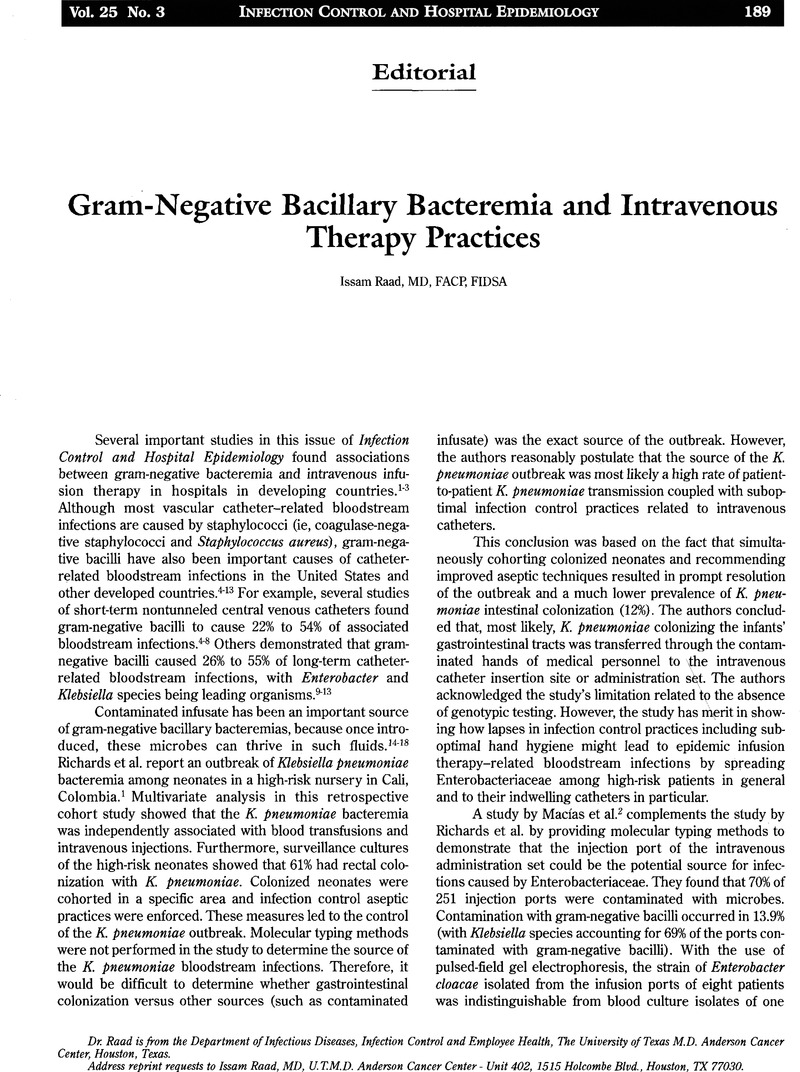Crossref Citations
This article has been cited by the following publications. This list is generated based on data provided by Crossref.
Sardan, Yesim Cetinkaya
Zarakolu, Pinar
Altun, Belgin
Yildirim, Aycan
Yildirim, Gonul
Hascelik, Gulsen
and
Uzun, Omrum
2004.
A Cluster of Nosocomial Klebsiella oxytoca Bloodstream Infections in a University Hospital.
Infection Control & Hospital Epidemiology,
Vol. 25,
Issue. 10,
p.
878.
Macias, Alejandro E.
Munoz, Juan M.
Galvan, Amparo
Gonzalez, Juan A.
Medina, Humberto
Alpuche, Celia
Cortes, Gabriel
and
Ponce-de-Leon, Samuel
2005.
Nosocomial Bacteremia in Neonates Related to Poor Standards of Care.
Pediatric Infectious Disease Journal,
Vol. 24,
Issue. 8,
p.
713.
&NA;
2006.
19. INFECTION CONTROL.
Journal of Infusion Nursing,
Vol. 29,
Issue. Supplement,
p.
S25.
&NA;
2006.
53. PHLEBITIS.
Journal of Infusion Nursing,
Vol. 29,
Issue. Supplement,
p.
S58.
Gray, Jennifer
Arvelo, Wences
McCracken, John
Lopez, Beatriz
Lessa, Fernanda C.
Kitchel, Brandon
Wong, Betty
Reyes, Lissette
and
Lindblade, Kim
2012.
An outbreak of Klebsiella pneumoniae late-onset sepsis in a neonatal intensive care unit in Guatemala.
American Journal of Infection Control,
Vol. 40,
Issue. 6,
p.
516.





